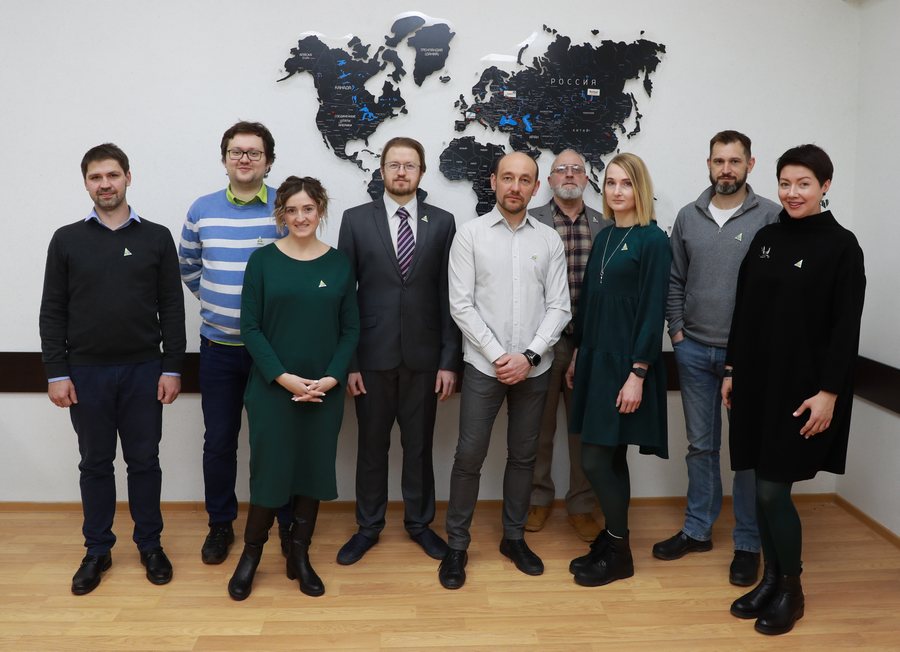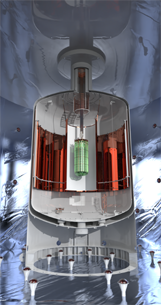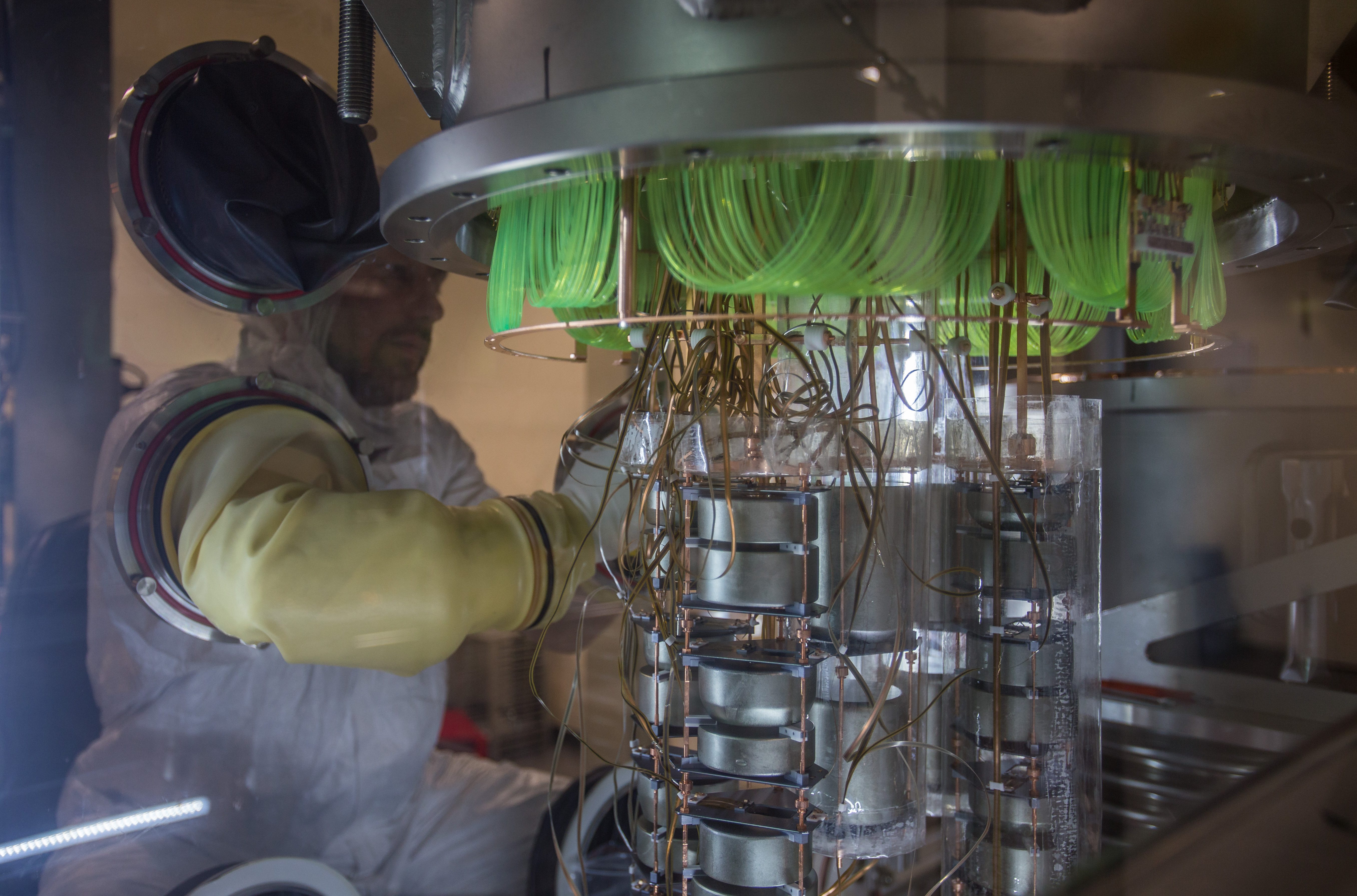Neutrinoless Neutrino Physics
News, 03 August 2021
The first JINR Prize 2020 in the nomination Experimental Physics Research was awarded to the team of authors K. Gusev, I. Zhitnikov, D. Zinatulina, A. Klimenko, A. Lubashevskiy, N. Rumyantseva, A. Smolnikov, M. Fomina, E. Shevchik, M. Shirchenko for their work “Background-free search for neutrinoless double-β decay of 76Ge with GERDA”.
Why there is so much more matter than antimatter in the Universe? This is one of the most intriguing questions in particle physics. The nature of neutrino may give an answer: in most preferrable theoretical models neutrinos are identical to their anti-particles. In this case, a rare nuclear process, a so-called neutrinoless double beta (0νββ) decay, exists. The decay still escapes detection but the GERDA experiment, in which DLNP JINR is playing a crucial role, has reached the best half-life limit of the 0νββ decay amongst all competitors.
 Egor Shevchik, Igor Zhitnikov, Maria Fomina, Alexey Lubashevskiy, Konstantin Gusev, Alexander Klimenko, Nadezhda Rumyantseva, Mark Shirchenko, Daniya Zinatulina. Photo by Igor Lapenko | JINR
Egor Shevchik, Igor Zhitnikov, Maria Fomina, Alexey Lubashevskiy, Konstantin Gusev, Alexander Klimenko, Nadezhda Rumyantseva, Mark Shirchenko, Daniya Zinatulina. Photo by Igor Lapenko | JINR
Neutrino is a particle that is extremely difficult to detect but the investigation of its properties is what helped to advance in elementary particle physics. This fact is shown by the four Nobel Prizes given to neutrino physics studies in recent years. Nevertheless, the question about the nature of neutrino (whether neutrino is Majorana (a particle is identical to its antiparticle) or Dirac (ν≠ṽ) particle) remains unanswered.
Two-neutrino double beta (2νββ) decay is rare (half-life is ~ 1021 years) second-order process, where two neutrons decay in two protons, two electrons, and two antineutrinos, has been observed by now in quite a few isotopes including 76Ge. In the hypothetical neutrinoless mode the lepton number conservation is violated. As the result 0vββ decay is completely forbidden in the Standard Model (SM) of particle physics. That is why the discovery of neutrinoless double beta decay will prove the existence of New Physics beyond the SM.
 Currently, there are many projects aimed to search for this amazing decay, using various isotopes and detection techniques. The GERDA (GERmanium Detector Array) experiment is one of the leaders in this field. It is carried out at the Gran Sasso National Laboratory in Italy by European and Russian scientists.
Currently, there are many projects aimed to search for this amazing decay, using various isotopes and detection techniques. The GERDA (GERmanium Detector Array) experiment is one of the leaders in this field. It is carried out at the Gran Sasso National Laboratory in Italy by European and Russian scientists.
GERDA utilises high-purity germanium detectors enriched in 76Ge. So, a detector at the same time is a source of double beta decay events, which results in the high detection efficiency. In addition, the experimental setup is compact and requires a minimal amount of structural materials, which is particularly important to achieve an ultra-low background. The good energy resolution typical for germanium detectors as well as novel experimental techniques developed by the GERDA collaboration provide spectacular background suppression.
The GERDA experiment uses a pioneering approach: other than in the previous germanium experiments, Ge detectors are operated without encapsulation in a cryostat of ultrapure liquid argon that provides both cooling (up to 87 K) and shielding. The detectors with a total mass of about 40 kg are mounted in seven strings inside the liquid argon cryostat (64 м3) immersed in a 590 м3 water tank. The facility is situated in the Gran Sasso underground laboratory, that helps to protect from cosmic radiation. Starting from Phase II of the experiment, the argon is equipped with light detectors thus making it possible to use it as an active shielding. Thanks to this, as well as the powerful pulse shape discrimination methods in Ge detectors, in GERDA Phase II we were able to achieve a unique background index of 0.5 × 10-4 counts/(keV kg yr). Thus, until reaching the desired exposure of 100 kg yr, less than one event should be detected in the region of interest. This makes GERDA the first background-free experiment searching for 0νββ decay. With a total exposure of 127.2 kg yr (103.7 kg yr in Phase II), we observed no 0νββ signal and derived a world best half-life limit > 1.8 × 1026 years (90% C.L.) at the unprecedented median sensitivity of 1.8 × 1026 years. The linear increase of sensitivity with exposure, achieved by GERDA, proves that we were taking data in background free regime. This fact opens very promising future for the background-free tone-scale germanium experiment LEGEND. In a first phase, it will deploy a mass of 200 kg of enriched Ge detectors in the modified infrastructure of GERDA in Gran Sasso. The sensitivity will reach 1027 years after about 5 years. The LEGEND experiment is expected to start data taking at the end of this year.
GERDA Project Leader at JINR, senior researcher Konstantin Gusev
